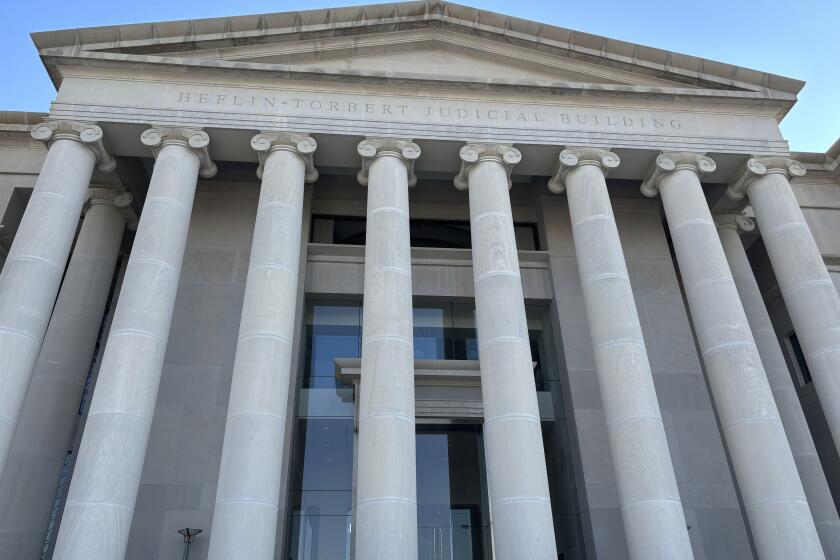U.N. hopes to build momentum for humanitarian aid in Syria if cease-fire holds
As a cease-fire in Syria entered its third day, authorities said Wednesday that the government was to begin withdrawing forces from a strategic road in the besieged rebel-held area of Aleppo, a move that would open the way for U.N. relief shipments.
Syrian forces, with Russian air support, closed the road in July, thereby completing the encirclement of rebel districts with a population of as many as 300,000.
A withdrawal south of Castello Road was to begin Thursday morning, according to Russian state news agency TASS. Rebel forces reportedly were to retreat simultaneously to positions north of the road.
But it remained unclear whether residents of the city would accept the sacks of flour and food baskets the United Nations hopes to deliver. For the last three days, officials have said residents want freedom, not food.
“The people inside Aleppo don’t want that aid,” Brita Haji Hasan, head of Aleppo City Local Council, said in an interview. “What’s human about putting me in a cage and giving food to me?”
If Syrian government forces withdraw from the road, he said, the aid could be accepted provided other conditions were met. Those include putting the road under full civilian administration, having the U.N. monitor compliance and opening it to normal commerce and civilian traffic.
The conditions may be unattainable, for they are tantamount to lifting the siege.
U.N. officials are hoping that the withdrawal of Syrian forces from the road will be enough to generate the momentum needed to start the flow of aid and, in time, open other forms of commerce with the city.
“This is a band-aid,” Jens Laerke, spokesman for the U.N. Office for the Coordination of Humanitarian Affairs, said in a phone interview from Geneva. “We need a complete lifting of sieges, in Aleppo and everywhere.” For now, however, “the siege remains. There will be no free movement.”
If the cease-fire holds for a full seven days and if food and medical supplies begin flowing to Aleppo and other government-besieged cities and towns, the U.S. and Russia have agreed to set up a joint coordination center to exchange intelligence as both countries stage airstrikes against Islamic State extremists in Syria. The move is highly controversial in Washington, where the major security agencies have all expressed reservations about collaboration with Russia.
The cease-fire began at sundown Monday, to coincide with the Muslim holiday Eid al-Adha and has largely held, with no reports of civilian deaths in the first 48 hours. Russia and moderate rebel forces exchanged charges of violations, but they have been relatively minor in nature compared to the onslaught that preceded them.
Meanwhile, Pentagon lawyers and strategists were hammering out details about how American and Russian military forces will go about jointly targeting terrorist groups in Syria should the cease-fire agreement hold.
“We’ve got a ways to go to see whether it will be implemented, but if it is, it will mean that the suffering of the Syrian people is eased,” Defense Secretary Ashton Carter said Wednesday while traveling in Austin, Texas. “It will mean that Russia gets on the right side of things in Syria, not on the wrong side and that’s good news.”
The first step calls for Carter to sign a “national security waiver” along with Secretary of State John F. Kerry. The government order would set aside conditions by Congress that prohibit military-to-military conversations between Russia and the United States.
The freeze in talks began after Russia’s annexation of Crimea more than two years ago and its continued involvement in the Ukrainian civil war.
The U.S. military is expected to reserve information on Islamic State extremists so it can continue targeting them from the air in northern and eastern Syria. But the Pentagon will share targeting information related to the Front for the Conquest of Syria, formerly known as Al Nusra Front, which the U.S. considers Al Qaeda’s branch in northwestern Syria.
The U.S. hope is that by sharing targeting information on the front, it will sharpen Russia’s focus on the militants rather than the U.S-backed rebel forces opposing the government of Syrian President Bashar Assad. Russia has said that U.S. allies work alongside the Al Qaeda-linked militants and are therefore indistinguishable amid the mosaic of militias on the ground in Syria.
The Pentagon has yet to figure how it will share sensitive intelligence and targeting information with Moscow.
“There is a trust deficit,” said Gen. Joseph Votel, head of U.S. Central Command, which oversees all military operations in the Middle East, during an event in Washington. “It’s not clear what their objectives are.”
Military lawyers are determining what the legal liability is for the U.S. if, after the collaboration begins, Russia continues to use unguided, or “dumb,” bombs to indiscriminately hit civilian targets on the so-called “no-strike list” that include schools, hospitals and other critical Syrian infrastructure.
Pentagon officials are also concerned about having to expand the number of drone flights in Syria, or redirect them from Islamic State-held areas, to help meet the new demands for increased surveillance over spots where the Al Qaeda-linked militants are operating and are often intertwined with rebels supported by the U.S.
“As the terms of reference are finalized, we will take the guidance, review it and build an operational plan that executes the mission precisely while minimizing risk to the coalition team and civilians on the ground,” said Lt. Gen. Jeffrey Harrigian, commander of air forces for U.S. Central Command, in a teleconference with reporters at the Pentagon Tuesday.
Special correspondent Gutman reported from Istanbul and Times staff writer Hennigan from Washington.
More to Read
Sign up for Essential California
The most important California stories and recommendations in your inbox every morning.
You may occasionally receive promotional content from the Los Angeles Times.











